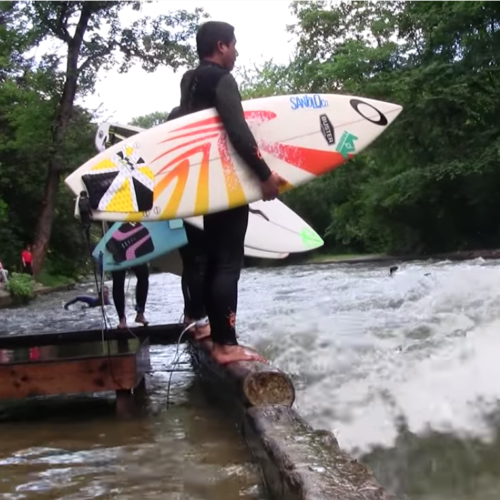
Hydraulic Jumps
A hydraulic jump happens when fluid levels become deeper and change the speed of the fluid. This change in speed creates a stationary wave. Hydraulic jumps happen naturally in rivers where water is forced to travel around boulders or when an incoming tide meets the outgoing water of a river. They can also be created and used by engineers to control the flow of water.
Recreation
Hydraulic jumps have many uses in dam design and other water resource management, but they are also a lot of fun. Around the world, many adventurers play on hydraulic jumps; and they use water recreational equipment such as kayaks or surfboards to do so. A popular activity in Eisbach Germany is river surfing.
Engineering
A hydraulic jump is a design feature engineers can use to slow down the speed of water. This is important in dam design and most used in open water channels. When water passes through a dam and exits out a spillway, a hydraulic jump helps reduce the risk of damage or erosion to the natural waterbed.
Another use of a hydraulic jump is to prevent air locks in pipes. This is important because air locks prevent the flow of liquids through pipes. A block like this can cause a lot of damage if it occurs in a sewage line.
Hydraulic Jumps and OEI
At OEI, understanding how hydraulic jumps affect fluid is an important part of our hydrodynamic services. Hydraulic jumps are a tool we can use as we implement environmentally sound and sustainable options as possible engineering solutions.
Dam design and levee safety are just a small part of the hydrodynamic services that are OEI’s specialty. We have clients nationwide on the federal, state, municipal, private, and industrial sectors. Visit our projects page to discover the diverse areas of engineering expertise OEI can use to find a solution to your engineering project.
